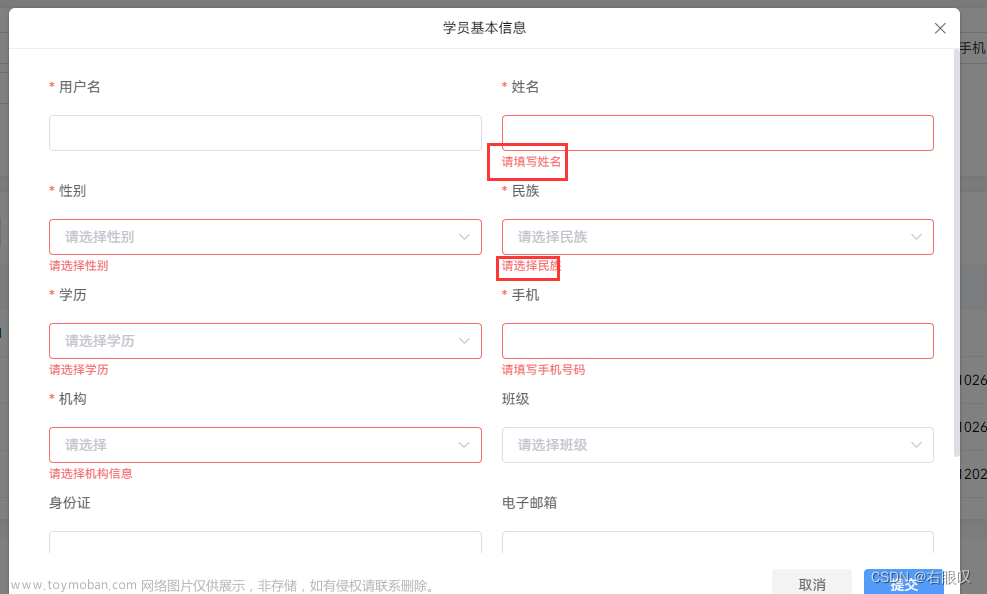1、v-else必须要和v-if匹配使用,v-else不能单独使用。
<template v-else>
<el-table-column
:prop="item.propName"
:label="item.labelName"
:key="item.propName"
:align="item.alignType"
:width="item.colWidth"
:fixed="item.fixed"
:actiom="item.action"
show-overflow-tooltip
>
<template slot-scope="scope">
//在template标签中,添加v-if元素并赋值
<template v-if="item.propName==='action'">
<el-button @click="handleClick()" type="text" size="small" >查看</el-button>
</template>
<span v-else>{{scope.row[item.propName]}}</span>
</template>
</el-table-column>
</template>2.在表格中自定义字段名文章来源:https://www.toymoban.com/news/detail-527521.html
bodyData: [
{
propName: 'HANDLE_USER',
alignType: 'center',
colWidth: '',
labelName: '当前处理人'
},
{
propName: 'action',//自定义字段名
alignType: 'center',
colWidth: '',
labelName: '工单处理'
},
],结论:vue中的条件语句,v-else是v-if的条件为不成立时,就会对v-else内的内容进行展现,若成立则展现v-else之中的内容文章来源地址https://www.toymoban.com/news/detail-527521.html
到了这里,关于element ui表单中v-if 和v-else的使用的文章就介绍完了。如果您还想了解更多内容,请在右上角搜索TOY模板网以前的文章或继续浏览下面的相关文章,希望大家以后多多支持TOY模板网!










